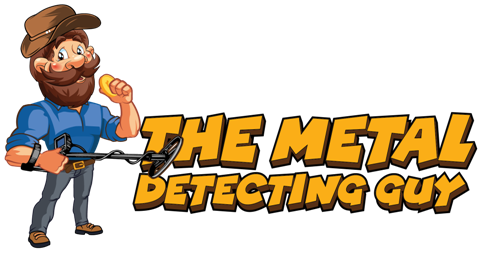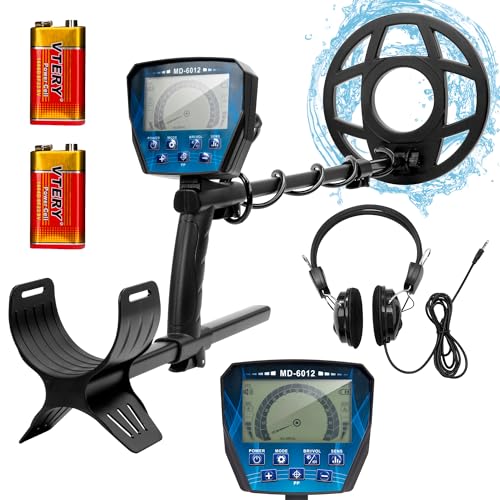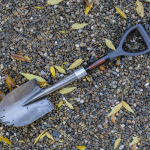
Are you a metal detectorist who wants the ultimate guide on metal detecting coils?
Whether you’re new to the hobby or have been detecting for years, this guide is for you. We’ll walk through all of the different types of coils and help you find the perfect one for your needs. You’ll learn about their features and how they work so that when it’s time to buy, you know what to look for.
If you want to be successful in your hobby then understanding these coils is critical! This guide will show you everything from coil size, shape, depth rating, and more so that no matter where your treasure hunting takes place there’s a coil just right for the job.
We hope you enjoy reading our Ultimate Guide To Metal Detecting Coils!
A metal detector coil is a crucial part of your detector. And choosing the right coil can be the difference between finding that buried coin and coming up empty-handed. With so many different coils to choose from, it can be difficult to find the perfect one for you. In this article, we take an in-depth look at what makes each type unique and explain how you can choose the right coil for your needs!
Metal detecting coil types vary widely, so choosing a particular one can be challenging. Today we’ll cover the different types with descriptions of the sizes, shapes, and construction; helping you pick the right coil for you and what will work best for your needs.
Metal Detecting Coils Explained
A search coil is an essential part of a metal detector. It generates the magnetic field and can sense metallic targets in the surrounding environment. Search coils come in many sizes, each with different characteristics that make them perfect for your needs and the task.

The most popular coil size is usually 6″, which works well when detecting specific items from under long grass, heavy soil, or sand. This size has a good detection depth making this coil perfect for coin-hunting enthusiasts as they will detect coins at good depths depending on the setup of your machine.
Metal detector search coils are located at the end of the stem and are connected to a control housing that contains circuits for receiving, amplifying, and processing electrical signals. These signals are then processed by a receiver circuit.
In order to find the right coil for your detecting needs, it helps to understand what qualities different coils provide. Today we’ll talk about different sizes and shapes of search coils so you are better equipped to choose a coil that works best with your needs. But before we get into that….
How Do Metal Detecting Coils Work?
Metal detecting search coils consist of two internal sets of coiled wires, a Transmit Coil and Receive Coil. Mono coils can be different in that one coil acts as both the TX (transmitter) and RX (receiver). When the detector is on, a magnetic field is generated from the transmitter coil that creates an electric current in any metal object around it. A separate receiver coil receives this transmitted signal and detects changes to it caused by metal objects nearby. This difference in signal strength or frequency initiates a tone so you know where to dig.
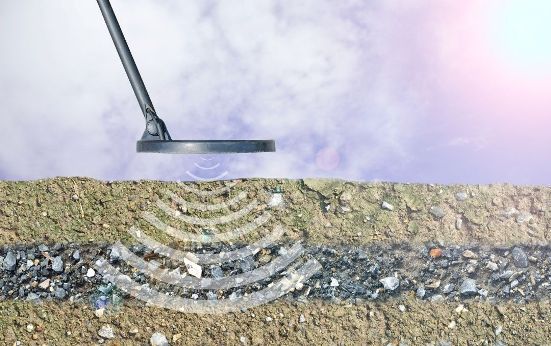
The search coil’s detection pattern is determined by the combination of the search coils generated and sensing fields. These are primarily determined by your search coil’s dimensions. Too narrow an RX sensing field undermines sensitivity to small targets; too wide a receiving pattern increases the search area but reduces the depth of the search.
Does Size & Shape Matter?
Selecting the best search coil can be a daunting task. That’s why you should take the time to learn all about different types of coils, how they work, and where they might be most effective before you buy.
The shape and dimensions of search coils can make a big difference in how well the metal detector performs. Coils are typically circular, but they can also be of different shapes or sizes.
Coils come in a variety of sizes too. The size will determine the depth that it can detect, as well as how sensitive to small targets you’ll be able to find with your metal detector.
There are two main types – single loop coils which have one coil wrapped around an iron core; these work best for general detecting at depths up to about six inches (15 cm) deep or so because they’re more compact but less sensitive than their larger counterparts since there’s not much space between loops making them ideal when scanning large areas.

Then we’ve got double-loop coils that use separate cores instead of just wrapping wire around once; this allows for more space between loops which in turn makes them much better at detecting small targets like gold chains, earrings, and other jewelry.
And as we have said, there are also a few different coil shapes to choose from: round coils work best on flat ground or when you need an even scan of the surface; elliptical-shaped ones can be used with any type of ground and are great for detecting small targets like gold chains, earrings; square coils work best on uneven surfaces or when you need to cover a large area quickly. Let’s take a closer look.
Metal Detecting Coil Size
There is a direct link between the size of a magnetic field emitted and the size of the detector coil. The larger the coil, the bigger the magnetic field is that is generated. So, therefore, the large search coils generally detect much deeper than smaller search coils.
So why would you use a smaller search coil?
Small Coils
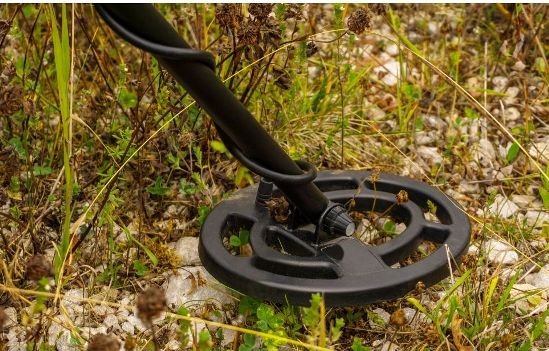
Well, the smaller coils tend to be sensitive to smaller shallow objects just below the surface. They are also less sensitive to electromagnetic interference than their bigger brothers. And the smaller search coils can get into those tighter places such as between trees and rocks.
Large Coils
The larger coils are used for things like exploring large open areas where you need to cover more ground in a hurry. They’re also best for places with varied surface types (i.e. hard pack and rocky through water) because they have enough depth capacity to dig up anything at any height within its range of operation.
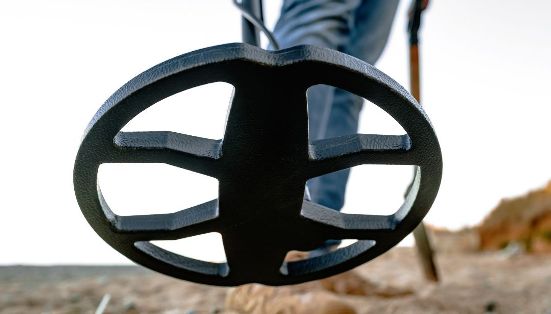
These large coils work well when you need it all done quickly but can’t worry about being too picky about size or weight – because these babies will find whatever’s there no matter what!
Since a small search coil has a concentrated magnetic field it’s the perfect option for searching areas filled with a lot of metal debris and trash. This allows you to maneuver through and around the trash to locate the good targets, especially when searching in tight places where large search coils cannot go.
In addition, because of their concentrated detection field, small search coils are the best for detecting very small objects. However, a small search coil provides less coverage per sweep and more scans will be required to cover a search area.
Metal Detecting Coil Design
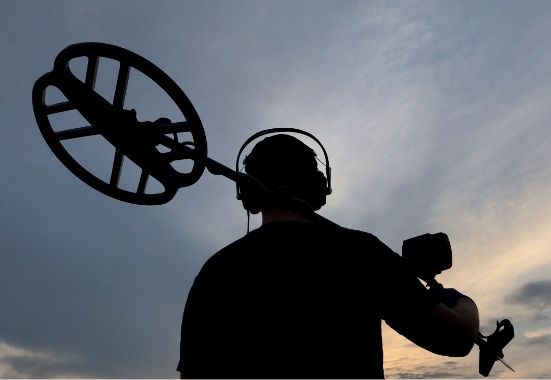
A coil shape can be a crucial factor in your metal detecting pursuit. Circular coils are the most practical choice because they offer stability and provide a better performance, while different shapes may be necessary for suitability to certain environmental requirements.
Depending on the scenario an elliptical coil could be a better choice for those who wish to cover less ground but not give up any coverage width.
Considering that an elliptical coil provides more surface area per square inch than a circular coil, while still maintaining great sensitivity and depth penetration these coils are perfect for areas where there are many obstacles in the way.
Concentric Coils
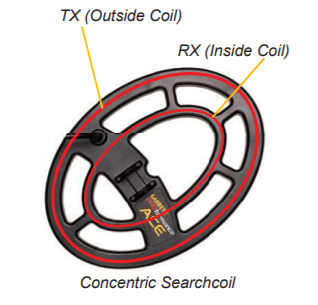
Concentric coils are a configuration consisting of a TX coil and RX coil which are circular and usually arranged around the center axis. The advantage is that both coils can be wound as large as possible inside the given search coil diameter, giving it the largest detection field and greatest depth.
The one downside of this type of search coil is that it is the most susceptible to getting interference from ground minerals.in heavily mineralized areas.
Mono Coils

A mono coil is a variation of the concentric configuration where both transmit and receive coils are located together usually in proximity with one another to minimize “ground loss” or interference from electromagnetic fields outside your operating area. The common ground between these two components provides benefits such as a rapid response.
The mono coil can be more challenging to ground balance than the Double-D, making it less optimal for mineral-rich soils.
Imaging Coils
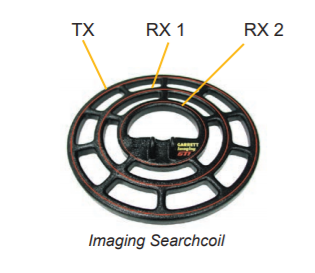
An imaging search coil is an enhanced version of the concentric configuration that features a central RX coil. Its additional target information allows this type of coil to provide accurate target-depth perception and great target-sizing capabilities.
With this extra information, the detector can give you a much better idea of the target detected and help you to distinguish between trash and good targets of the same conductivity (e.g. a quarter or. a tin can). This capability is unmatched in any metal detector in the world and at the time of writing is only available on Garrett’s GTI series.
Double-D Coils
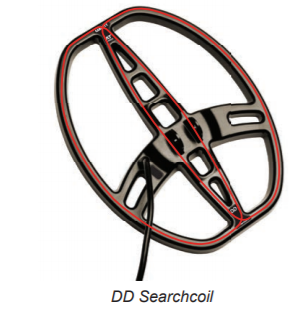
The Double-D configuration provides great stability, amazing depth, good ground balancing, and an expanded search pattern.
The Double-D will significantly outperform the concentric coil especially when you are searching over mineralized ground. For this reason, it is highly advisable to use a double D search coil when hunting over any mineralized ground, which you will often encounter when gold prospecting and relic hunting.
Best Metal Detecting Coils
So how do you choose between the various coils that are available?
Well, the least expensive metal detectors usually come with the round concentric search coil, these are the most lightweight so are great for the beginner. These coils can cover large areas and have a wider detection range for finding small or lost objects. They can be used to detect metals, whether you are beachcombing or just general treasure hunting.
The more expensive models often have an elliptical and/or DD search coil fitted to them, which is great for detecting on highly-mineralized soil because it allows the user to detect objects buried under surfaces such as sand where a mono loop would not be as effective due to its lack of depth and its difficulty in getting the ground balance correct.
Those who bought their metal detectors just after the ’90s may not have a DD search coil fitted because DD’s fell out of favor during the previous years as the knowledge and skills needed to make them did not advance fast enough. Nowadays we are seeing a trend towards their manufacture again, as the developers gain confidence in the best way to design and make them again.
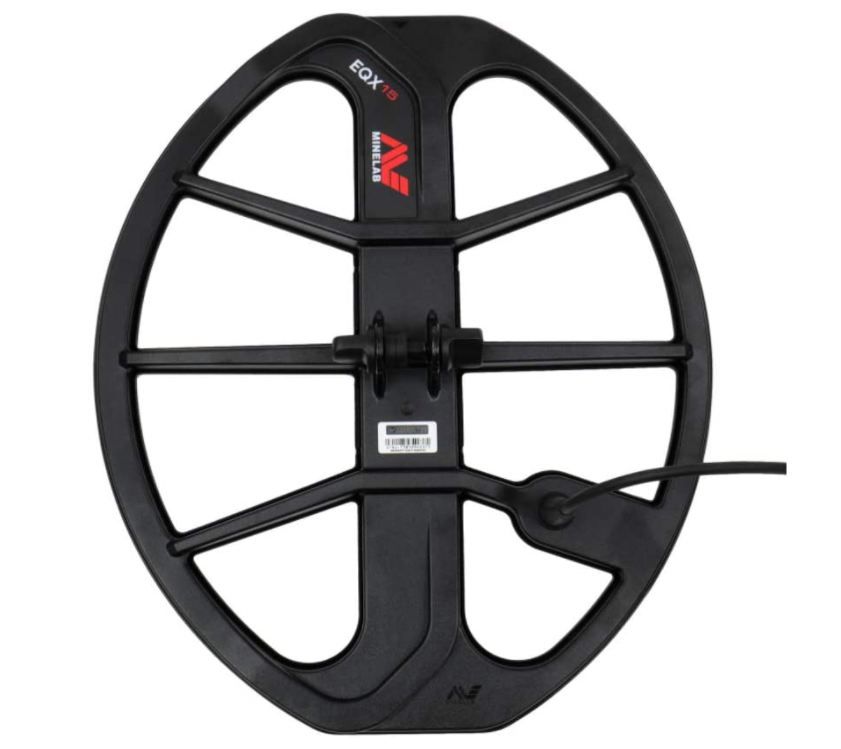
Double-D’s are usually preferred when relic hunting and gold prospecting is your choice and are generally found fitted on the specialist machines, although saying that the elliptical concentric has some advantages as well. Round and elliptical concentric coils are better suited for coin hunting, especially in those areas which are high in iron and aluminum.
The vast majority of general-purpose detectors today come with a concentric coil. Specialty detectors, such as high-frequency gold detectors and some pulse induction units, have a double-D coil.
The round concentric coil is generally the best choice for most detectorists, as it offers a balance between depth and sensitivity – but, as I’m sure you can see, this isn’t always true! Pinpointing is relatively straightforward with concentric coils and depth is quite good (relatively speaking).
Try to base your choice on where you think you will be spending most of your detecting time. And bear in mind that most decent-priced machines will have the ideal coil fitted as standard anyway. Another bonus is that most of the top manufacturers, allow you to change the coil on the machine with others in their range. S before you buy that shiny new detector, take a look at the manufactures website to see what options are available.
Final Thoughts
Finally, bear in mind that one size does not fit all. Large coils get better depth on large targets with less sensitivity to small objects, while small coils have better sensitivity to small targets, but you lose the depth. Also, a small coil is good for detecting in tight areas. So, when you’re selecting a coil for your metal detector it is important to take into account the type of detecting you will be doing, the size of your coil, and how much space is available to work with. The best way to find out what type of coil will work best for you is to talk to a few people and find out their experiences. Happy Hunting!!
